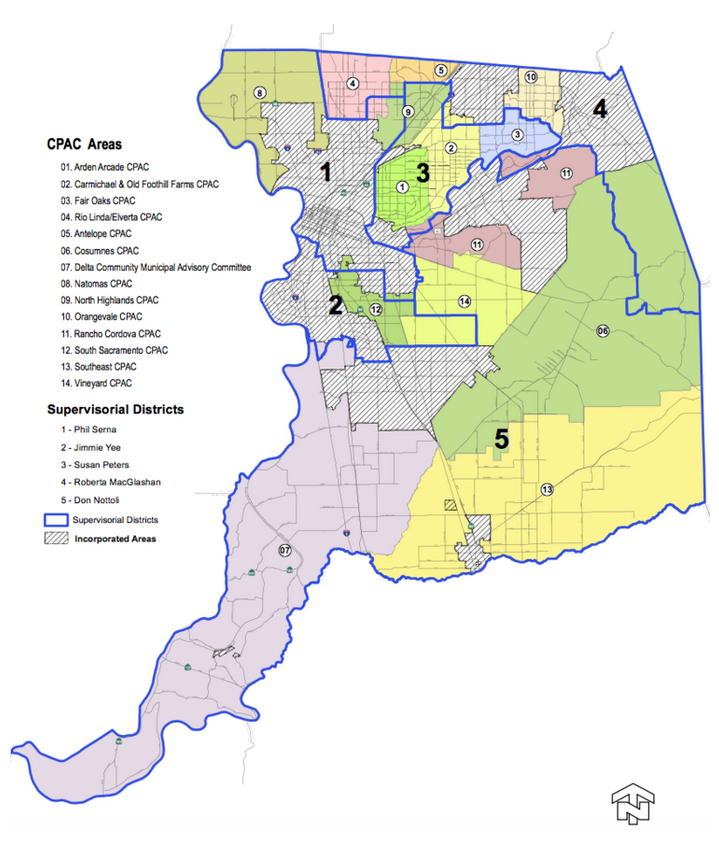What is a CPAC and what does it do?
(originally published June 7, 2017)
California law enables County Boards of Supervisors to establish Municipal Advisory Committees (MACs) to advise the Boards on matters relating to areas designated by the Boards concerning services which are or might be provided to those areas by the County or other local governmental agencies, including but not limited to advice on matters of public health, safety, welfare, public works, and planning. The law allows County Boards to either appoint members or provide that the members be elected. A 2014 survey of California by Castro Valley Matters discovered many MACs and "MAC equivalent" organizations formed under various other parts of state law: 181 councils serving over 1.4 million Californians who live in unincorporated areas, with 35% of those councils being directly elected by local constituents.
Sacramento County has created MACs throughout the county's unincorporated area, referred to as either MACs or CPACs -- Community Planning Advisory Councils. The County has 14 CPAC areas (see map below) where our Supervisors have appointed people "to facilitate and encourage direct citizen participation early in the planning process when it is easier for project proponents and decision-makers to respond to public concerns." Once the CPAC process has ascertained community responses to proposed development projects, a report is presented to the next step in the planning approval process, which could be a decision by a Zoning Administrator (staff) or the County Planning Commission (an appointee from each Supervisor), depending on the type of development project. In the case of liquor licenses, the CPAC's recommendation goes directly to the Board of Supervisors.
A CPAC has no authority to make a decision to approve or reject a project. Instead, a CPAC merely recommends actions based on community feedback. Approving authorities (e.g. Zoning Administrator or Planning Commission) have no obligation to go along with the recommendations of a CPAC, although the County has stated that "CPAC recommendations and neighborhood input, however, are carefully weighed by the final decision-making bodies." Members receive training in their roles and responsibilities for County planning processes and liquor license approval process. County staff are present for assistance at CPAC meetings.
The Castro Valley Matters survey identified the Arden Arcade CPAC as serving the largest (100,000 people) unincorporated area among state MACs. The Arden Arcade CPAC meets on the 4th Thursday of each month, following procedures laid out by the County, and posts its agendas and meeting minutes online. The County, however, has cautioned that since "minutes usually report simple public responses and do not provide detail," the public should follow projects online and submit comments to the actual decision-making bodies. Because CPAC meetings look and feel like formal public meetings, and are conducted as such, the lack of a detailed record of comments, and even the function of a CPAC, can be confusing for the public. The real action in forming a development project takes place out of public view, such as in meetings with County staff. The actual yea or nay project decision is made by staff or public bodies who meet weeks or even months after the CPAC has considered a project and the members of those bodies are generally unfamiliar with or unaccountable to the affected community. Still, having a CPAC involved is at least marginally helpful to all concerned because the public is given formal opportunities to learn about proposed projects and people can learn how to comment on the proposals.

